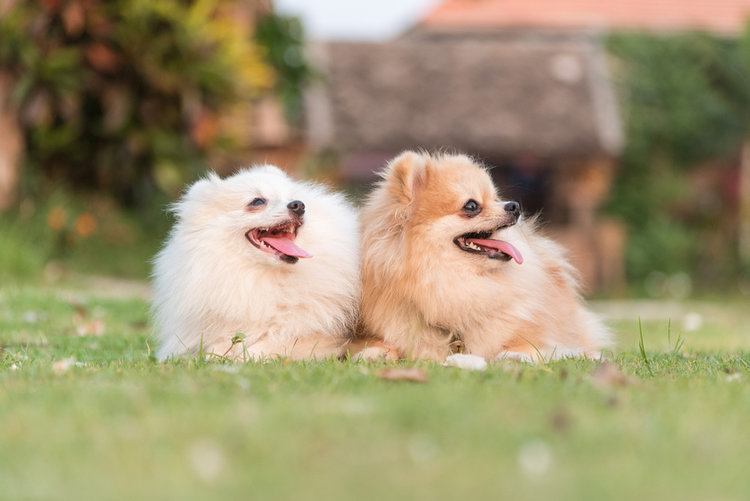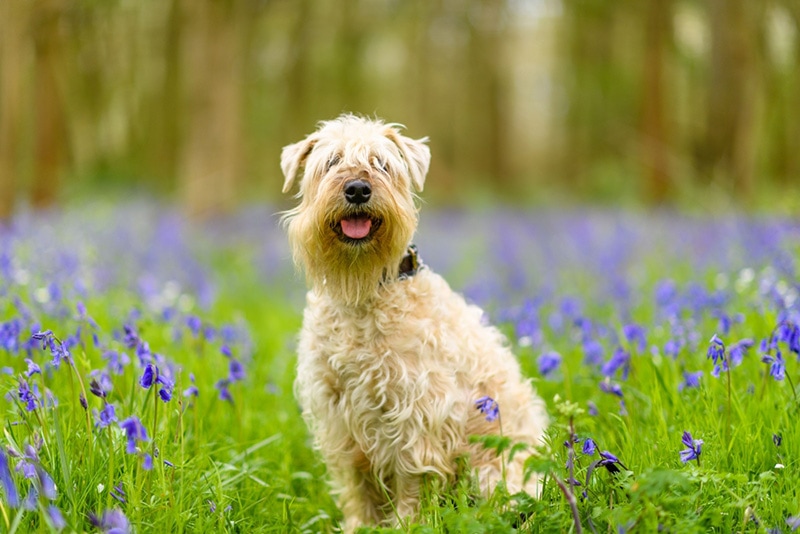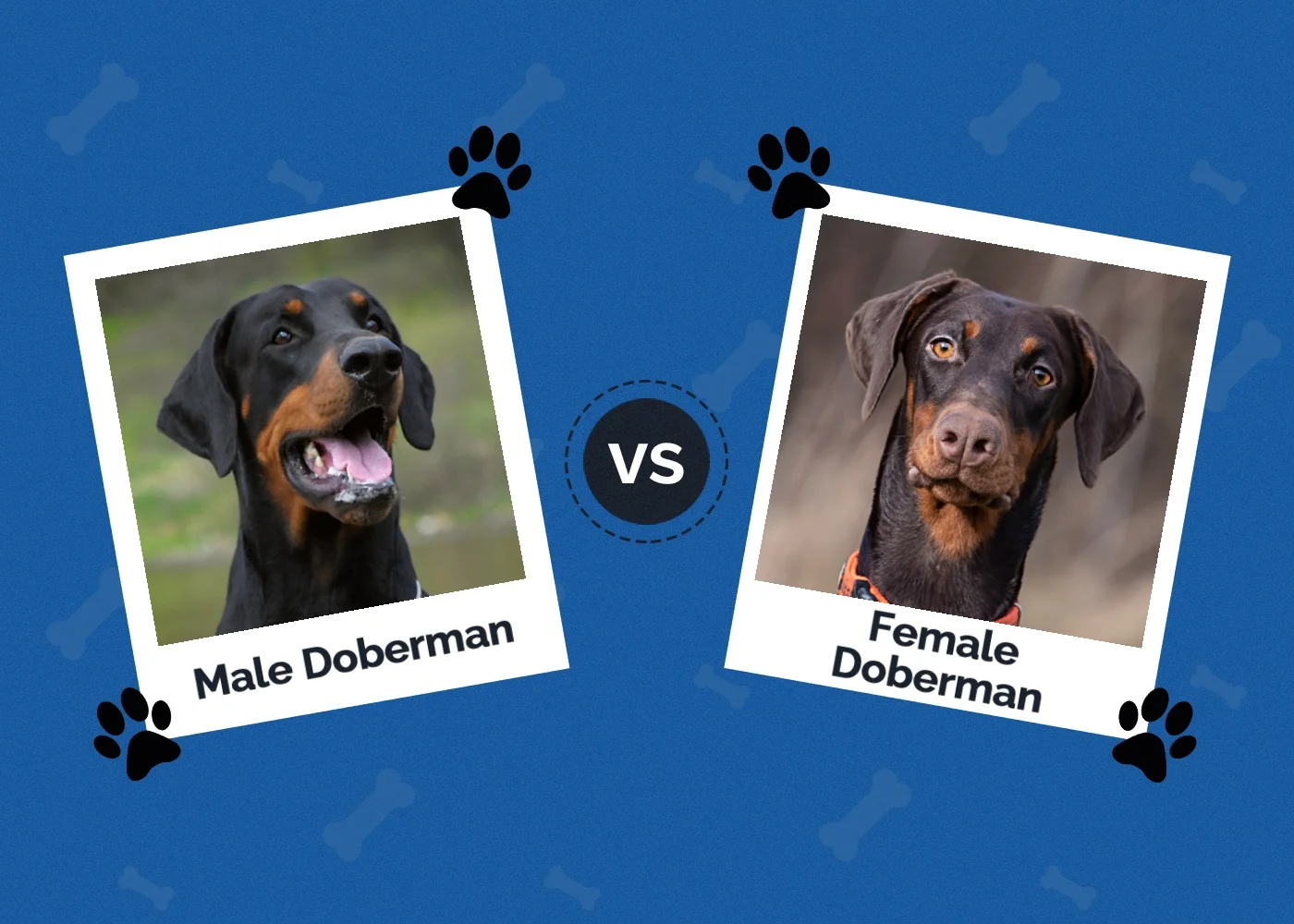Pug vs Boston Terrier: Which One Is Right for Me? (With Pictures)
By Beth Crane
Updated on
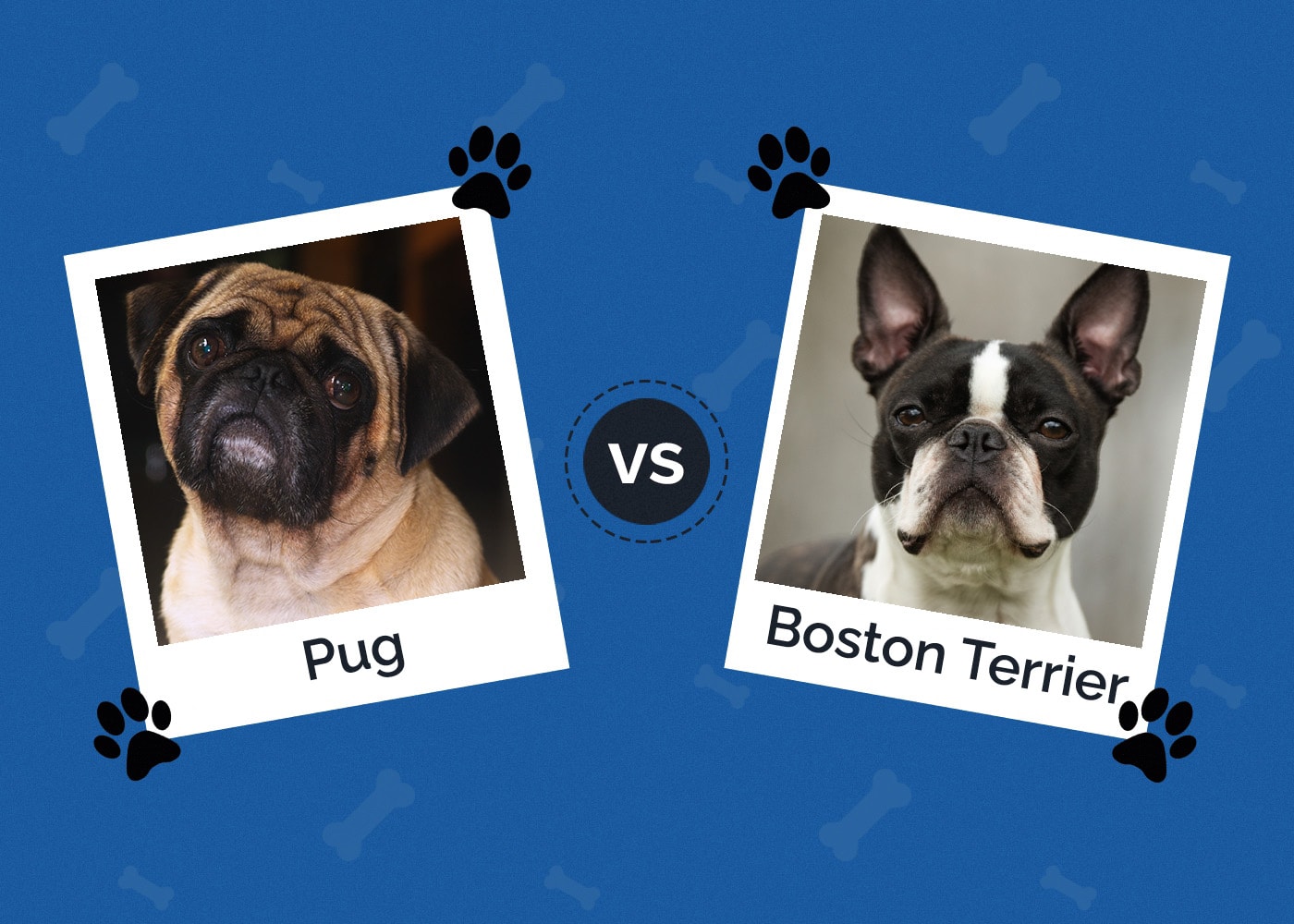
These breeds are similar in their builds and looks, but their temperaments and individual traits make them stand out. The Boston Terrier is a bright dog with a funny and joyful disposition; there’s never a dull moment with one of these clowns in the room. On the other hand, the Pug is a loyal companion who gets completely wrapped up in its owner’s emotions. Depending on its owners, a pug will sometimes be relaxed or lively and dancing! Read further to compare these two small breeds and find out which might make the perfect addition to your home.
Visual Differences
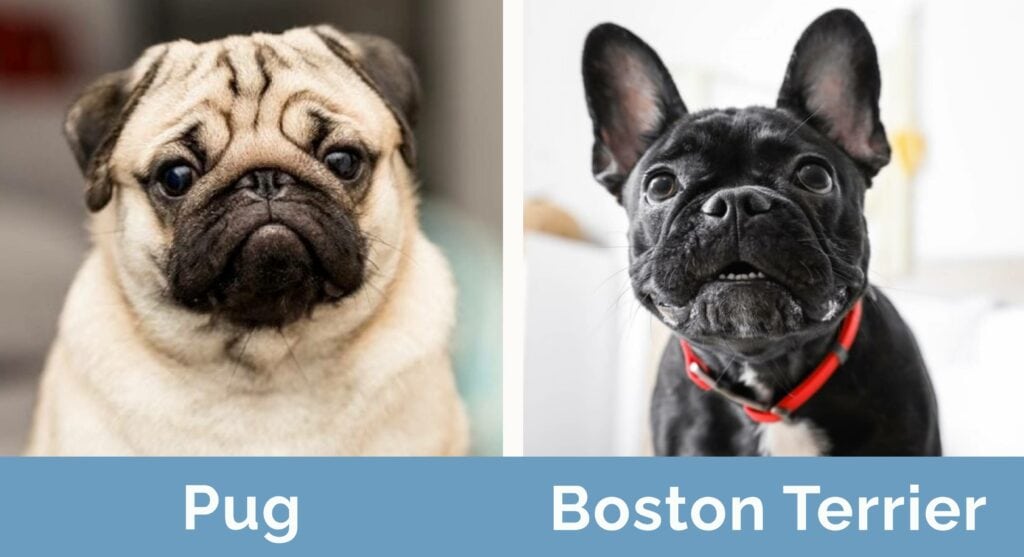
At a Glance
- Average height (adult): 15–17 inches
- Average weight (adult): 12–25 pounds
- Lifespan: 11–13 years
- Exercise: 1 hour a day
- Grooming needs: Low
- Family-friendly: Yes
- Other pet-friendly: Often
- Trainability: Strong-willed, merry, eager to please, bright
- Average height (adult): 10–13 inches
- Average weight (adult): 14–18 pounds
- Lifespan: 13–15 years
- Exercise: 1 hour a day
- Grooming needs: Low
- Family-friendly: Yes
- Other pet-friendly: Often
- Trainability: Bright, charming, strong-willed, vivacious
Boston Terrier Overview
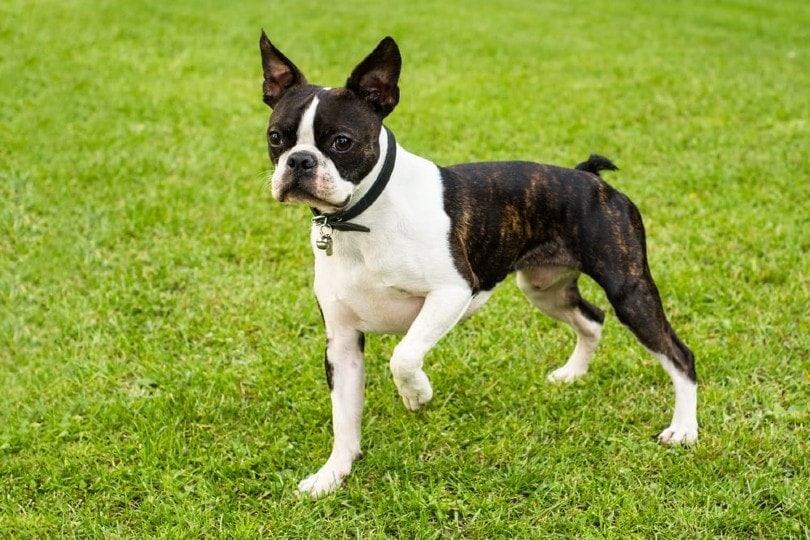
The Boston Terrier is an interesting breed that was first established in 1875 in Boston, Massachusetts. Since its inception, the Boston Terrier has been honed and refined by the AKC (American Kennel Club) and has become a popular and beloved breed among the American people.
Personality / Character
Boston Terriers are known for their strong but happy-go-lucky personalities and are often clownish in their humor and playfulness. Boston Terriers are easier to train than smaller breeds, as they’re eager to please their owners and love receiving praise. These dogs get along well with children and other family members and pets. Despite this, the Boston Terrier can be territorial and even aggressive if not well-socialized. They are generally quiet, only barking when necessary, so they make good apartment pets.
Training
The Boston Terrier has average intelligence but is bright, quick to learn, and passionate about showing off their skills. They’re easy to train, and they want to please their owners sometimes to a fault. Early socialization of the Boston Terrier is vital to establishing training and behavioral boundaries, as they can be stubborn and set in their ways. Training should be done to prevent territorial aggression and excessive protectiveness of their families, which come more naturally to these dogs.
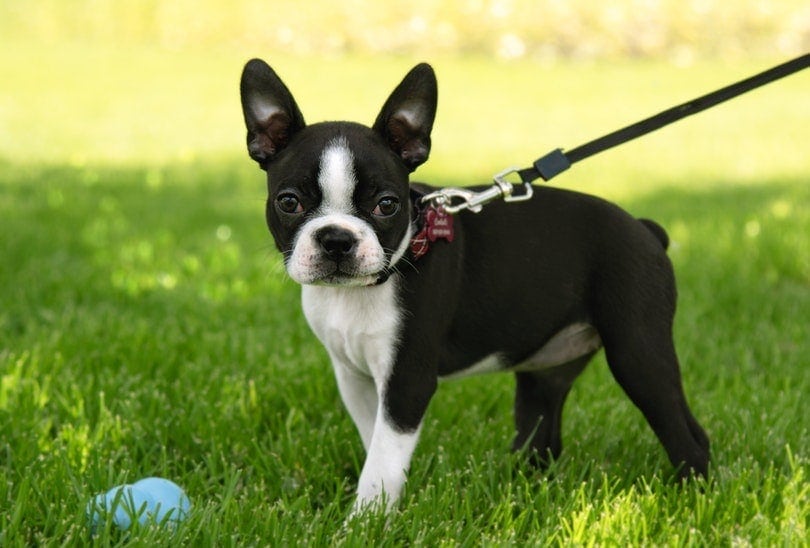
Health & Care
Generally, the Boston Terrier is one of the healthier brachycephalic dog breeds. However, they have several health problems due to inherited conditions.
- Curved spine (roach back): Problems with the patellae (knees) on the hind legs of a Boston Terrier can cause pain, often resulting in the dog leaning forward on its front legs and creating a curved spine and dropped hindquarters.
- Corneal ulcers or injuries: Boston Terriers have eyes that protrude from their heads, making them more susceptible to corneal ulcers or injuries. Corneal ulcers are serious and painful ulcers on the eye’s surface that need prompt veterinary attention as they can cause blindness if left untreated.
- Cesarian Section: Boston Terriers also have small hips and larger heads and shoulders, meaning that a high proportion of females need cesarian sections to be able to birth their litter. 63% of Boston Terriers in one study required cesarean sections.
- Craniomandibular Osteopathy: Craniomandibular Osteopathy or “lion jaw” is thought to be an inherited condition that causes excessive bone growth around the skill and jaw of the dog. This is a painful and debilitating condition, beginning with swelling and pain and ending in extreme examples, with dogs being unable to open their mouths.
- Cushing’s disease: Hyperadrenocorticism or Cushing’s disease is the excessive production of cortisol, a hormone produced by the adrenal glands. Tumors can cause this in the adrenal glands themselves, or a deformation can cause it in the pituitary gland in the brain. Cushing’s disease causes hair loss, increased appetite, weight gain, and muscle loss.
- Teeth brushing is essential in this breed, as they often have overcrowding problems causing dental disease. Getting them used to daily tooth brushing is best to prevent dental disease and gum problems.
- Brachycephalic Obstructive Airway Syndrome (BOAS): Dogs with short muzzles, domed skulls, narrowed trachea, narrowed nostrils, and long soft palate (the roof of the mouth) are known as brachycephalic breeds. When a dog suffers the adverse effects of brachycephaly, this is known as BOAS. BOAS can make dogs more intolerant of exercise and heat, as they cannot get enough oxygen into their lungs and tissues or effectively cool down. Some of the signs of BOAS are:
- Struggling to breathe
- Collapse
- Snoring
- Excessive “reversed” sneezing
Grooming
The Boston Terrier is a smooth, short-coated breed that doesn’t require much grooming. However, they do shed, so light brushing once or twice a week is enough to remove any shed hair and dry skin, along with spreading nourishing skin oils over the coat.
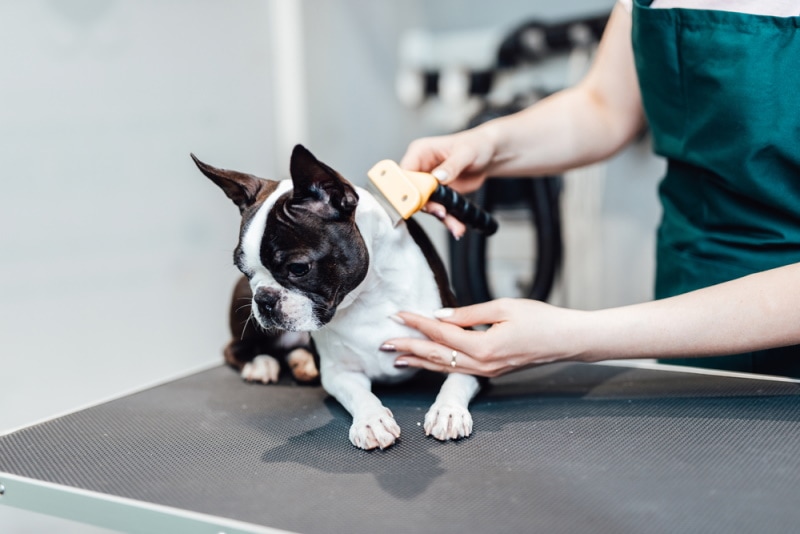
Exercise
This sprightly breed needs around one hour of daily exercise and regular playtime at home. Unfortunately, brachycephalic breeds like the Boston Terrier can be exercise intolerant, so careful observation of their exercise is needed. Exercise is important to keep them trim, but they shouldn’t be exercised in high temperatures since they can suffer from heat exhaustion.
Suitable for:
The Boston Terrier is suitable for families with or without children, and people of all ages can enjoy their company. They are spirited dogs who need owners with the time to train and properly socialize them to curtail their territorial tendencies. They often need someone to be home with them as they can be clingy, but since they’re portable dogs, they’ll accompany owners who like to go on adventures!
- Spirited
- Fun
- Good with children
- Territorial
- Strong-willed
Pug Overview
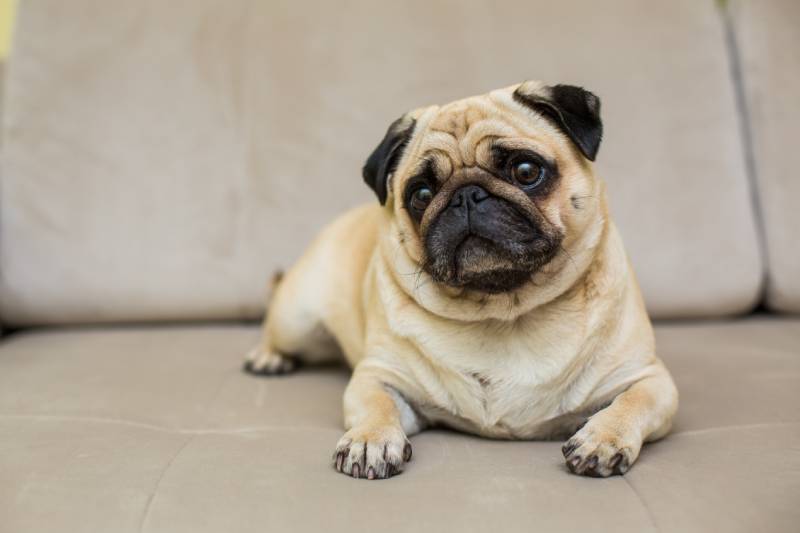
The Pug is a famous breed characterized by their goofy grins and abundant wrinkles. Originating in China, the modern Pug was first transported to America in the 19th century, where enthusiasts and breeders refined its signature snub-nosed look.
Personality / Character
The Pug has a big dog personality squeezed into its compact, muscular frame. They are charming, larger-than-life dogs that are strong-willed but seldom aggressive. Pugs happily play with children, are often fond of them, and have a keen sense of intuition. They often reflect their owner’s emotions and are vivacious dogs that thrive in the company of their owners and don’t like to be left alone. They’re “shadow” dogs, sticking to their owners and following them everywhere.
Training
Pugs are willing to please but can be stubborn and hard-headed in their training. However, they are eager to follow their owners everywhere, which can be used to compel them during training to break stubbornness. Pugs are also usually food motivated; a treat can go a long way in training, but owners should keep an eye on the number of treats given as pugs can be prone to obesity. Finally, pugs aren’t especially intelligent (they ranked 57 out of 59 on the canine intelligence scale), but don’t let that dissuade you from proper training and socialization.
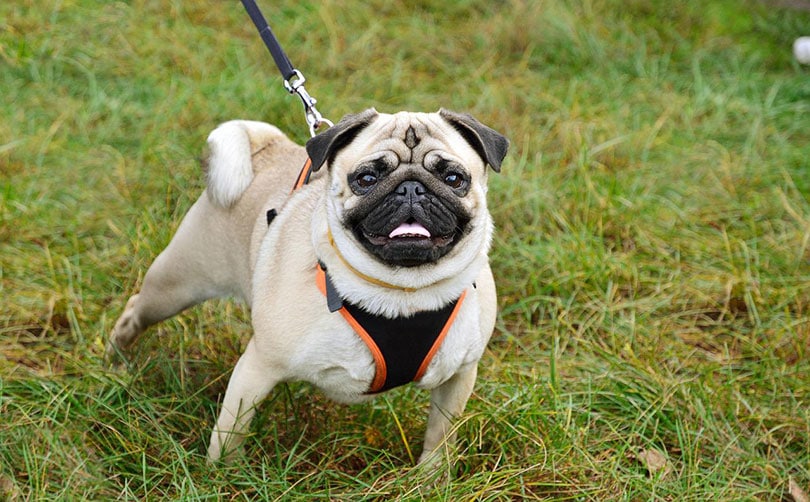
Health & Care
Pugs, unfortunately, suffer from several severe health problems, some of which are due to their breed conformation:
- Protruding eyes: Pugs can also suffer from protruding eyes, making them more prone to injury, including corneal ulcers and scratches. This also makes prolapse of the eye (eye popping out of the socket) more likely.
- Skin fold dermatitis: Pugs are famously wrinkled; these wrinkles can become infected with yeast or bacteria, resulting in dermatitis.
- Hip dysplasia: Hip dysplasia is an inherited condition that causes painful malformation and dislocation of the hips. Hip dysplasia is present in up to 64% of pugs.
- Necrotizing Meningoencephalitis: This condition is an inflammation of the meninges (the membranes lining the brain and spinal cord), causing extreme distress and pain. Sadly, there is no cure. Signs of Necrotizing Meningoencephalitis progress from seizures that increase in length, behavioral changes, and pain to neck rigidity, blindness, and eventually death. Most Pugs with Necrotizing Meningoencephalitis either die or are euthanized within weeks of symptoms starting, which usually appear between 6 weeks and 7 years.
- BOAS: Because pugs are a textbook brachycephalic breed, they often suffer from brachycephalic obstructive airway syndrome (BOAS). Pugs with severe BOAS can pass out due to lack of oxygen.BOAS causes several adverse health effects, including:
- Collapse
- Struggling for breath
- Snoring
- Sneezing
Grooming
Pugs also have a smooth, glossy coat that needs minimal grooming. Grooming once or twice a week using a comb or a rubber brush will remove any shed hair and dead skin. This grooming will also spread nourishing oils from the skin down the hair shafts to condition the coat.
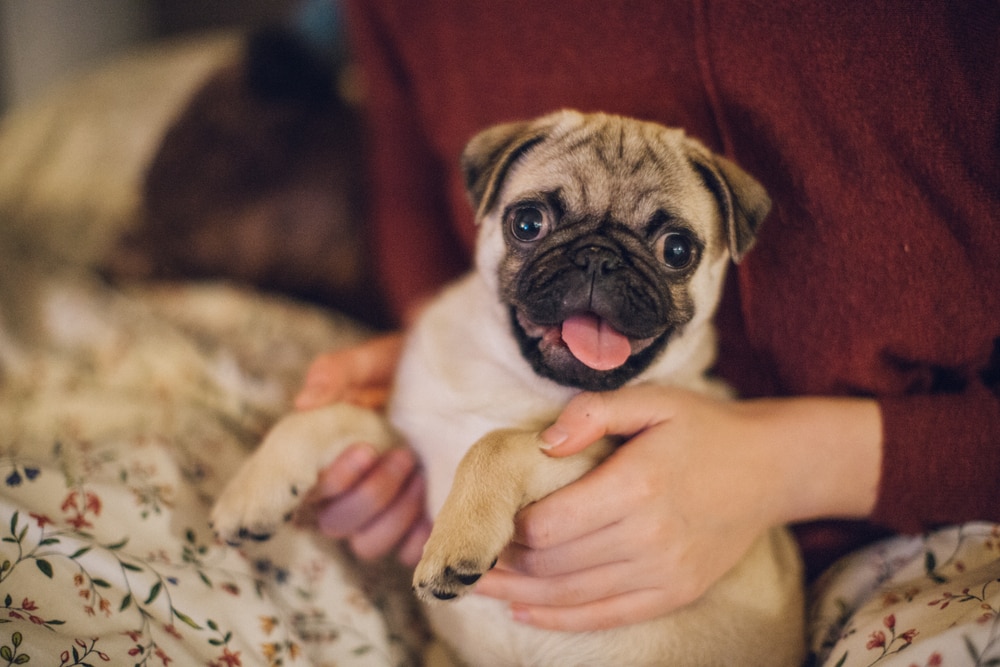
Exercise
To keep them trim, Pugs need daily walks. Keeping them cool during exercise is very important as they can overheat quickly. If your Pug suffers from BOAS, keeping an eye on their “coloring” (tongue and gum color) as well as their breathing is crucial, as lack of oxygen can cause cyanosis and collapse due to lack of oxygen. Short walks and indoor games are good ways to exercise them.
Suitable for:
Pugs are suitable for families with and without children. They thrive in mild climate areas, as extreme heat is detrimental to their health. Pugs need their families to be able to take them everywhere since they are Velcro dogs that hate being left alone at any time. Adequate training and socialization can help remedy this, but Pugs will be happiest around their families.
- Friendly
- Great with children
- Thrive on attention
- Many health problems
- Can be stubborn
Which Colors Can Each Breed Come In?
Both Pugs and Boston Terriers come in a wide variety of colors, giving potential owners a lot of choice.
- Fawn
- Black
- Silver
- Apricot
- Brindle and white
- Seal and white
- Black and white
While these colors are what the major kennel clubs accept, such as the AKC and the Federation Cynologiqiue Internationale (FCI), there are many variations of both breeds that are just as beautiful and most of the time, still registered under the breed.

Which Breed Is Right for You?
These two breeds are similar in looks, but personality-wise, the Boston Terrier wins for bravery, tenaciousness, and heart. If you want a small dog who can brighten your day while protecting your family, the Boston Terrier is for you. You’ll need time to train excessive protectiveness out and temper potential wariness, but the Boston Terrier makes a great, all-around family dog that’s small in stature and full of grace if you have the time and attention for them.
If you want a large dog in a small dog’s body that radiates sunshine and has time for everyone, the Pug is the dog for you. You must be prepared to handle and pay for health problems with this little dog, as they’re unfortunately plagued with them. However, you won’t find a more loving pet.
Featured Image Credit: (L) rangtheclick, Shutterstock | (R) BIGANDT.COM, Shutterstock

